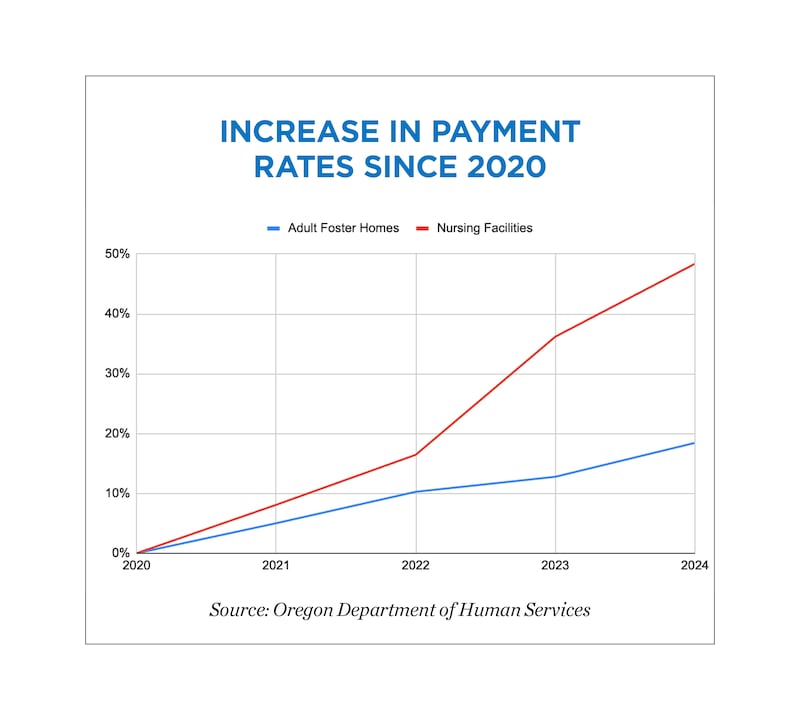Adult foster home operators across the state are crying foul over a recent trend. The Oregon Department of Human Services has rapidly increased the rates it pays for other types of long-term care for the elderly, leaving them in the dust.
The basic rate for nursing facilities, for example, has increased nearly 50% over the past four years. The base rate for smaller homes has increased only 18%.

These rates don’t represent the final amounts that the state pays per resident, which can vary based on the severity of their needs. But the homes are clearly struggling: More than half of the state’s adult foster homes have closed since 2007, according to testimony submitted by state Sen. Mark Meek (D-Gladstone) earlier this year.
“We’re losing these adult foster homes because they just cannot be sustained with increasing costs,” he tells WW.
The decline in adult foster homes has ramifications across the state’s health care system, which is struggling to address a lack of long-term care options for indigent seniors relying on Medicaid. Instead, they’re warehoused in hospitals, taking up costly beds.
Larger long-term care facilities wield a powerful lobbying apparatus in Salem. Adult foster homes, which are owner-operated and have fewer than five residents apiece, do not. A bill proposed in 2023 to raise rates failed, largely because of the price tag: $68 million.
